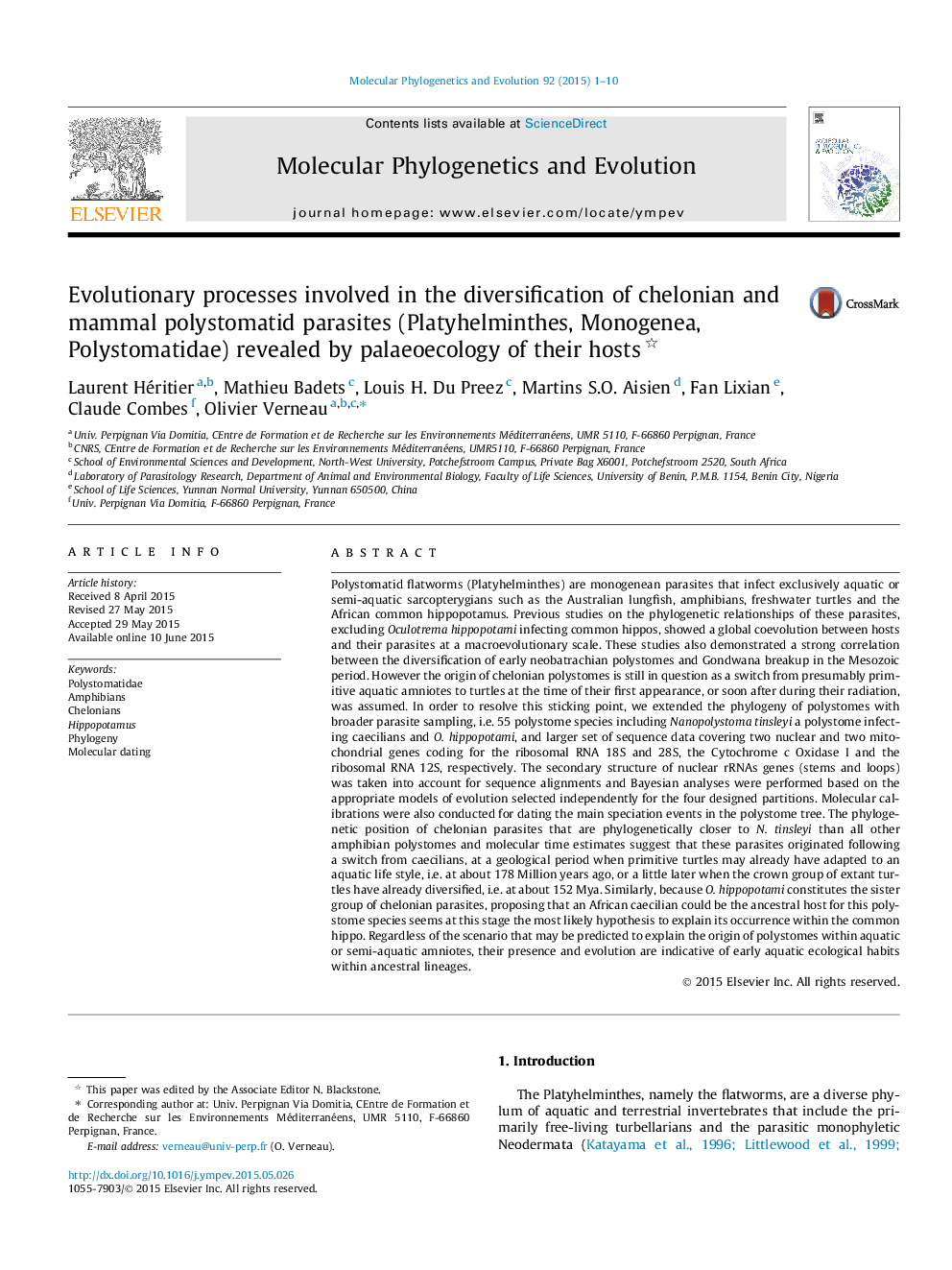| کد مقاله | کد نشریه | سال انتشار | مقاله انگلیسی | نسخه تمام متن |
|---|---|---|---|---|
| 5918762 | 1570804 | 2015 | 10 صفحه PDF | دانلود رایگان |

- Phylogeny of monogeneans infecting aquatic and semi-aquatic tetrapods.
- Molecular datings for main speciation events.
- Chelonian polystomes and O. hippopotami are nested within amphibian polystomes.
- Caecilians could be the ancestral hosts for polystomes infecting chelonians and hippos.
Polystomatid flatworms (Platyhelminthes) are monogenean parasites that infect exclusively aquatic or semi-aquatic sarcopterygians such as the Australian lungfish, amphibians, freshwater turtles and the African common hippopotamus. Previous studies on the phylogenetic relationships of these parasites, excluding Oculotrema hippopotami infecting common hippos, showed a global coevolution between hosts and their parasites at a macroevolutionary scale. These studies also demonstrated a strong correlation between the diversification of early neobatrachian polystomes and Gondwana breakup in the Mesozoic period. However the origin of chelonian polystomes is still in question as a switch from presumably primitive aquatic amniotes to turtles at the time of their first appearance, or soon after during their radiation, was assumed. In order to resolve this sticking point, we extended the phylogeny of polystomes with broader parasite sampling, i.e. 55 polystome species including Nanopolystoma tinsleyi a polystome infecting caecilians and O. hippopotami, and larger set of sequence data covering two nuclear and two mitochondrial genes coding for the ribosomal RNA 18S and 28S, the Cytochrome c Oxidase I and the ribosomal RNA 12S, respectively. The secondary structure of nuclear rRNAs genes (stems and loops) was taken into account for sequence alignments and Bayesian analyses were performed based on the appropriate models of evolution selected independently for the four designed partitions. Molecular calibrations were also conducted for dating the main speciation events in the polystome tree. The phylogenetic position of chelonian parasites that are phylogenetically closer to N. tinsleyi than all other amphibian polystomes and molecular time estimates suggest that these parasites originated following a switch from caecilians, at a geological period when primitive turtles may already have adapted to an aquatic life style, i.e. at about 178Â Million years ago, or a little later when the crown group of extant turtles have already diversified, i.e. at about 152Â Mya. Similarly, because O. hippopotami constitutes the sister group of chelonian parasites, proposing that an African caecilian could be the ancestral host for this polystome species seems at this stage the most likely hypothesis to explain its occurrence within the common hippo. Regardless of the scenario that may be predicted to explain the origin of polystomes within aquatic or semi-aquatic amniotes, their presence and evolution are indicative of early aquatic ecological habits within ancestral lineages.
Journal: Molecular Phylogenetics and Evolution - Volume 92, November 2015, Pages 1-10